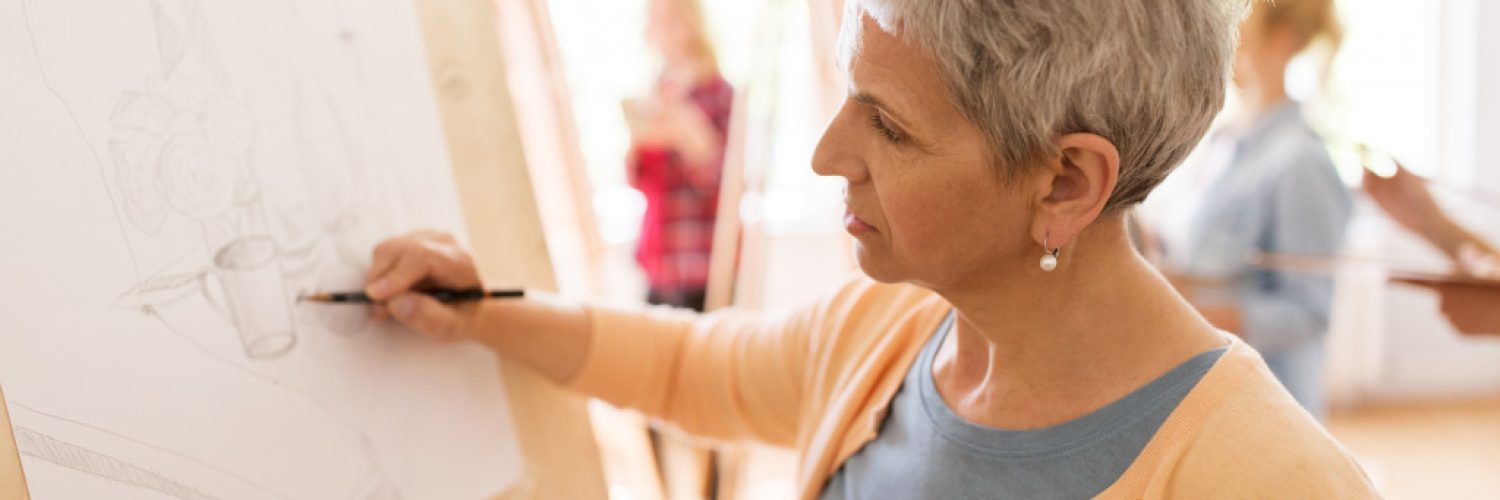- Creativity aids personal development and boosts business outcomes, necessitating its practice through accessible outlets.
- Drawing advances hand-eye coordination and spatial awareness, progressing from simple doodling to intricate scale modeling.
- Graphic design, a digital creativity form, enhances visual communication skills and opens up profitable career opportunities.
- Writing allows self-expression and cognitive growth, from personal journaling to complex narrative construction.
Creativity is the cornerstone of human intellect, a crucial component of development and personal expression. It’s a transformative force in our lives, enabling us to innovate, problem-solve, and express our thoughts and feelings. As per a study by Adobe, 82% of companies believe there is a strong connection between creativity and business results. Furthermore, according to a Forrester report, companies that foster creativity are 3.5 times more likely to outperform their peers regarding revenue growth. These compelling statistics underscore the pivotal role of creativity for individuals and within a business context.
However, it can be challenging to get creative when you do not have an outlet to explore and practice. Fortunately, you can find a wealth of resources to help you enhance your creativity and unleash its power. It is straightforward to start, even if you are a beginner:
Drawing
Drawing is a universal art form accessible to anyone, regardless of skill level or background. It only requires simple materials like paper and a pencil, making it a cost-effective means of creative expression. Furthermore, drawing can be practiced virtually anywhere, offering flexibility and convenience. Here are a few projects to consider, with each getting more difficult than the last:
Doodle Art
Begin your drawing journey with doodle art. This is an excellent exercise for developing hand-eye coordination and exploring your style. It could involve creating patterns, characters, or just random shapes. The beauty of doodling is that there are no rules – it’s all about letting your imagination run wild on the canvas of your choice.
Still-Life Sketches
Once comfortable with doodling, transition to still-life sketches. This practice involves drawing objects from your surroundings. Start with simple things like a coffee mug or a flower, focusing on understanding shapes and shadows. As your skill improves, gradually include more complex subjects in your sketches.
Portraits
Drawing portraits is a challenging yet rewarding progression. Begin with your reflection in the mirror, observing the nuances of facial features. Practice patience and perseverance, as this needs careful attention to detail. You can start drawing portraits of family members or friends who can provide helpful feedback. However, getting a mentor might be the best way to hone your skills.
Scale Modeling
Scale modeling is a significant leap from drawing, but the skills you’ve acquired so far will aid the transition. Start with straightforward models like miniature buildings or vehicles. As you become proficient, you can move on to more complex models that require intricate detailing and patience. Scale modeling facilitates a deeper appreciation for structures and forms and enhances spatial awareness and precision. You can secure scale model scenery supplies from your local arts and crafts store or online retailers. Those pieces can help bring your vision to life.
Graphic Design

Graphic design is a modern, digital art form that utilizes software tools to create visually compelling and meaningful designs. This discipline is a powerful way to enhance your creative skills, synthesizing technology, creativity, and communication. As you delve into graphic design, you’ll learn to use color, typography, layout, and imagery to effectively communicate a message or evoke a specific emotion. You’ll develop a keen eye for aesthetics and enhance your problem-solving skills, as every design project is essentially a visual solution to a communication problem.
Not only does graphic design catalyze your creativity, but it can also be a lucrative career or side hustle. There’s a high demand for skilled graphic designers in various industries, including advertising, marketing, media, and even the tech industry, where UI/UX design is crucial. Whether you’re working as an in-house designer, a freelancer, or running your design agency, graphic design offers numerous avenues for income. Additionally, the advent of online platforms like Behance, Dribbble, and Fiverr has made showcasing your work to potential clients globally easier. Thus, graphic design is a means to bolster your creative abilities and a profitable venture with endless possibilities.
Writing

Writing is an essential outlet for creativity that cultivates clear thinking, enhances communication skills, and allows people to articulate ideas in a tangible form. It is a powerful tool for personal growth and transformation, offering a platform for self-expression and introspection. Moreover, writing stimulates the brain, encouraging it to devise new ways of narrating stories, explaining concepts, or persuading an audience. As such, it plays a crucial role in fostering creativity.
To progress in writing, start with journaling. No rules or judgments govern this; just write your thoughts and feelings as they come. Over time, you’ll begin noticing patterns, themes, and unique aspects of your voice. Next, attempt short stories. This will help you understand the dynamics of a narrative, character development, and plot construction. Creative writing exercises like poetry or flash fiction can further refine your skills.
To elevate your writing, consider attending writing workshops or joining writers’ groups for peer review. You could also use online writing platforms, which offer constructive criticism and expose you to diverse writing styles. Remember, the most crucial aspect of improving your writing is consistency. Make it a habit to write regularly and over time. You’ll see your creativity and proficiency soar.
Final Thoughts
Creativity is a vital tool for personal and professional growth. It enables us to express ourselves, problem-solve, and find innovative solutions. While its power is undeniable, knowing where to start exploring creativity can be difficult. Fortunately, the resources discussed here offer an excellent jumping-off point. Drawing, graphic design, and writing are accessible forms of creative expression that can help you develop your skill set. So, take the plunge and unleash the creative power within you!

